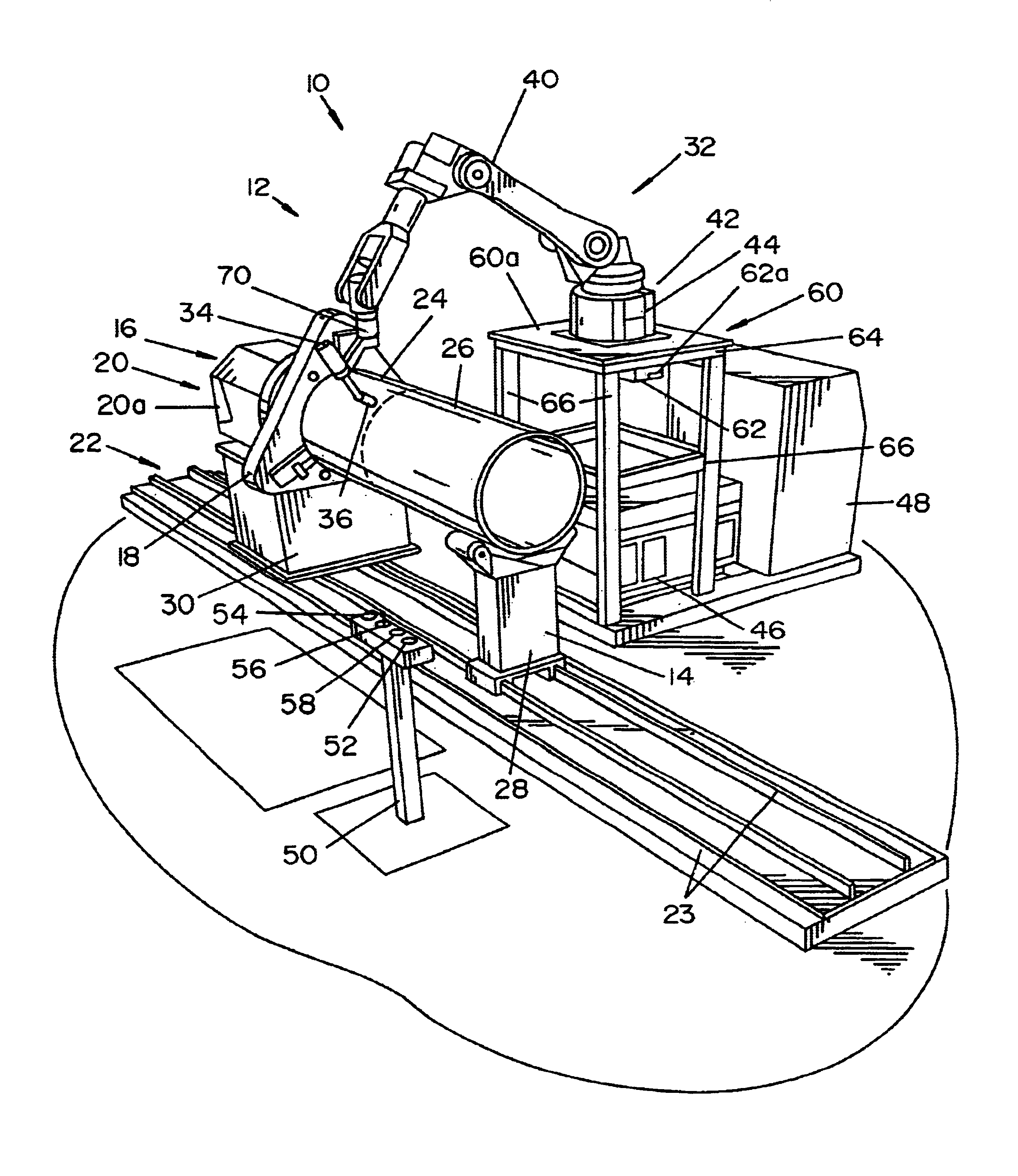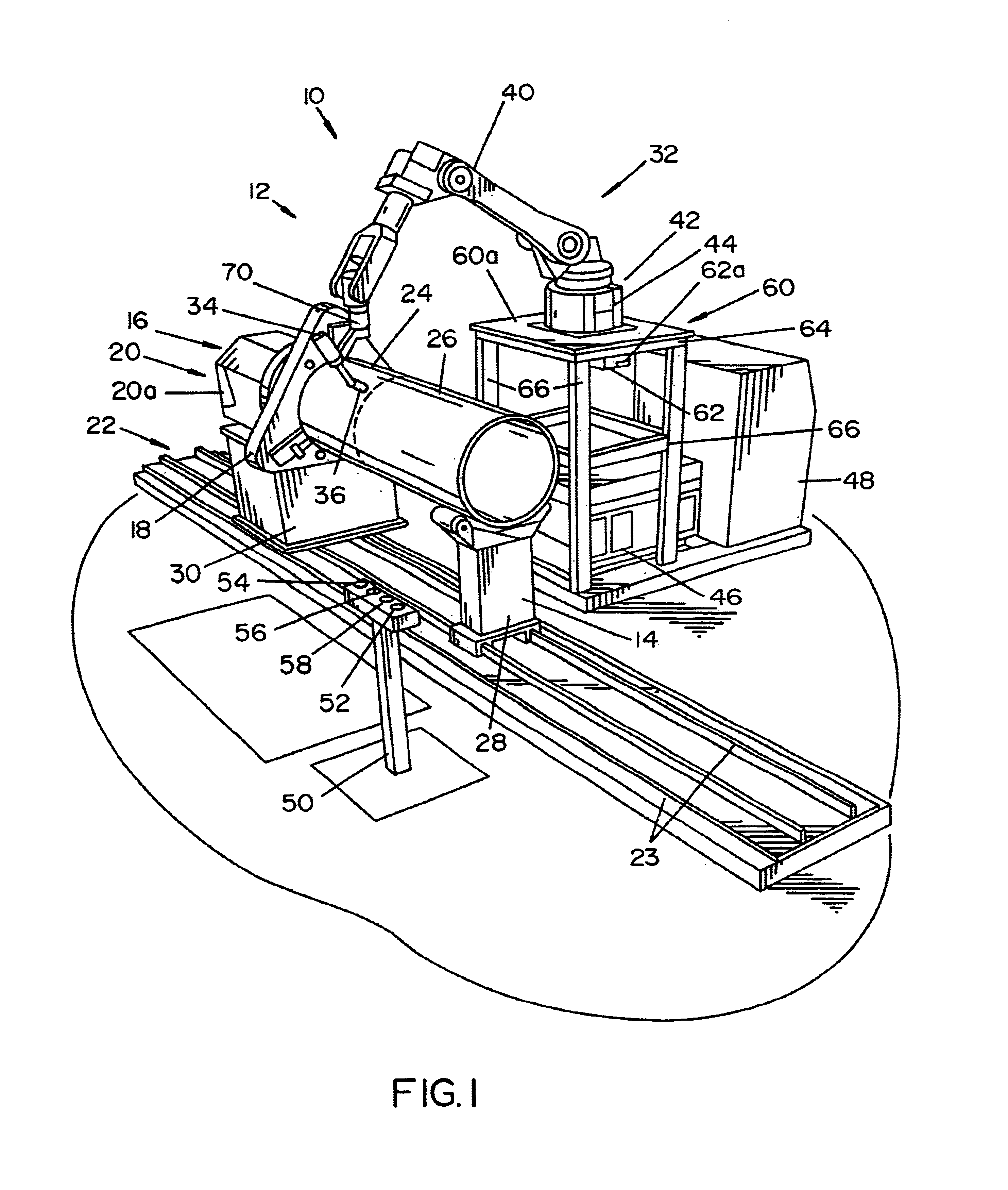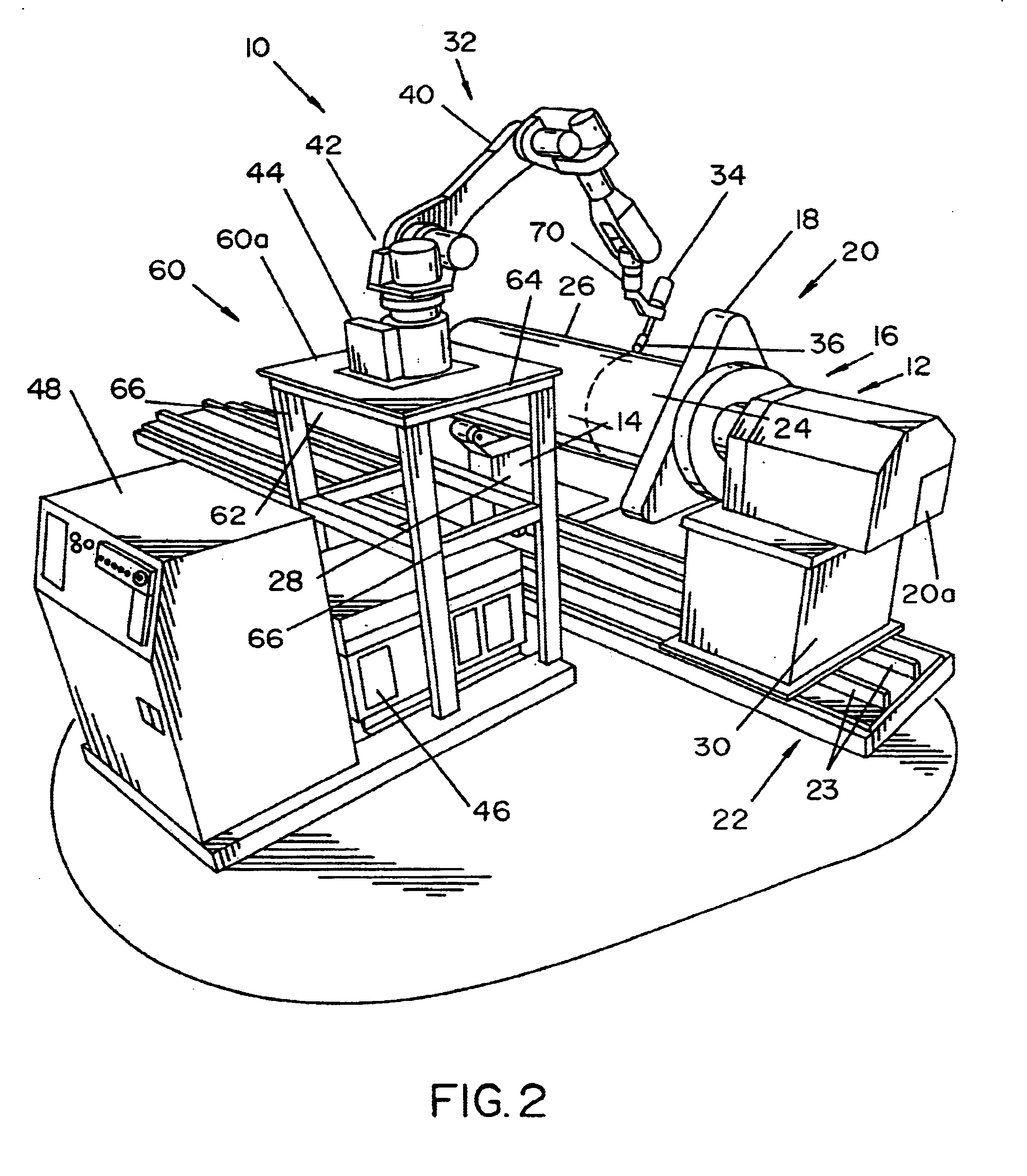Robotic cylinder welding
a robotic cylinder and welding technology, applied in the direction of soldering equipment, manufacturing tools, auxillary welding devices, etc., can solve the problems of defective welding, inability to alter the welding process in an open-loop system, and inability to provide existing open-loop welding systems
- Summary
- Abstract
- Description
- Claims
- Application Information
AI Technical Summary
Benefits of technology
Problems solved by technology
Method used
Image
Examples
Embodiment Construction
[0031]Referring now to the drawings wherein the drawings are for the purpose of illustrating the preferred embodiments of the invention only, and not for the purpose of limiting same, FIGS. 1 and 2 illustrate a robotic welding system 10 including a workpiece support assembly 12, having an idle arm 14 and head stock 16. Included as part of head stock 16 is a clamp or chuck element 18, and a motor / gear arrangement 20 having a motor controller 20a. The motor of motor / gear arrangement 20 may, in one embodiment, be a servo motor. Idle arm 14 and head stock 16 include wheels, bearings or other mechanisms to interface to a rail system 22, and which permit workpiece support 12 to move along rails 23. Idle arm 14 and head stock 16 each hold at least an end or portion of cylindrical workpiece portions 24 and 26, which are to be welded.
[0032]Idle arm 14 and head stock 16 are further configured with pedestals 28, 30, providing a known distance between the ground and workpiece portions held by w...
PUM
| Property | Measurement | Unit |
|---|---|---|
| diameter | aaaaa | aaaaa |
| size | aaaaa | aaaaa |
| lengths | aaaaa | aaaaa |
Abstract
Description
Claims
Application Information
 Login to View More
Login to View More - R&D
- Intellectual Property
- Life Sciences
- Materials
- Tech Scout
- Unparalleled Data Quality
- Higher Quality Content
- 60% Fewer Hallucinations
Browse by: Latest US Patents, China's latest patents, Technical Efficacy Thesaurus, Application Domain, Technology Topic, Popular Technical Reports.
© 2025 PatSnap. All rights reserved.Legal|Privacy policy|Modern Slavery Act Transparency Statement|Sitemap|About US| Contact US: help@patsnap.com



